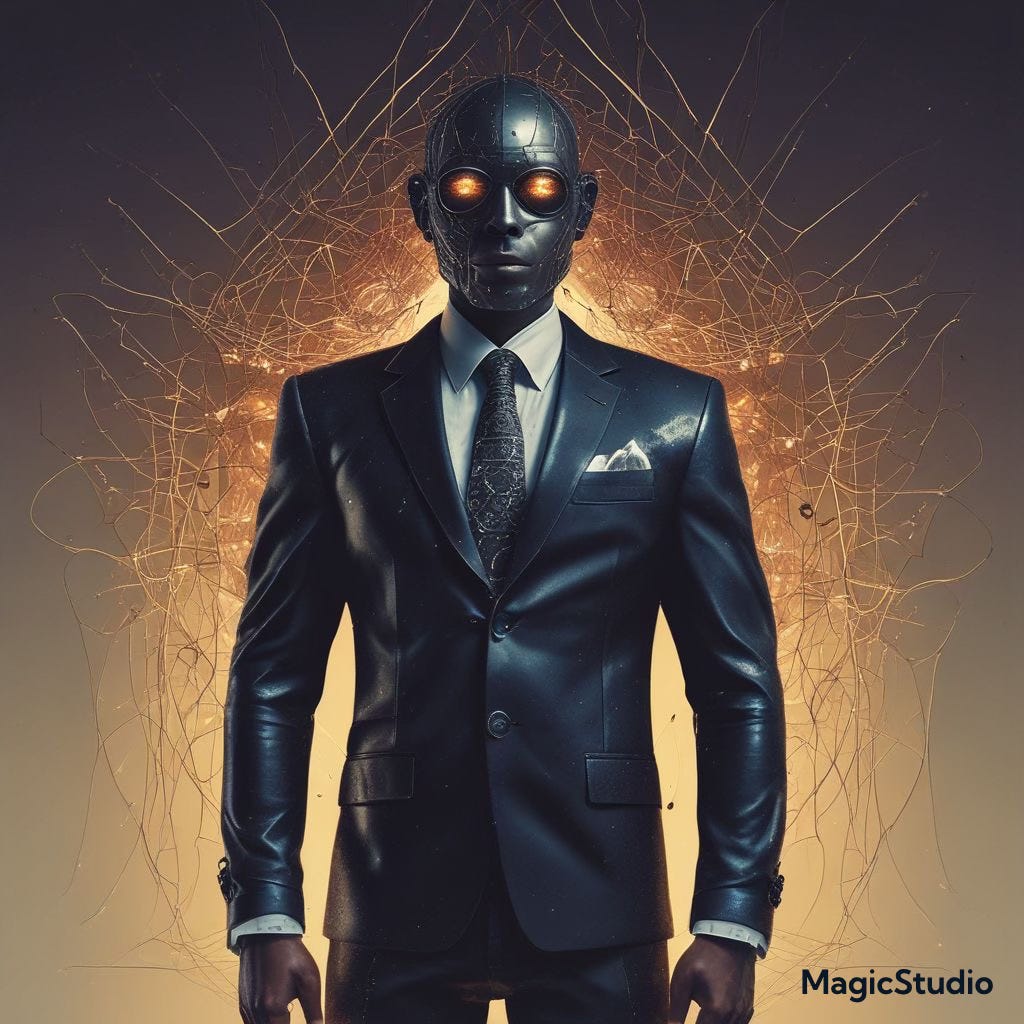Editor's Note: The Digital Minstrel Show Continues
What you are about to read is not simply cultural criticism - it is an indictment of America's oldest con game, now operating with algorithmic precision. This essay reveals how the digital age has not abolished racial exploitation, but rather automated it, turning black creativity into the 21st century's most lucrative natural resource.
The inclusion of Tidal's journey from black-owned promise to corporate asset lays bare the uncomfortable truth: in our current system, black ownership often functions as a temporary marketing strategy rather than a sustainable reality. When Jay-Z's much-touted artist utopia became just another line item in Jack Dorsey's tech portfolio, it completed a cycle we've seen from Motown to Def Jam - black innovation absorbed into white capital.
***
Introduction: The Funhouse Mirror of Black Expression
Black cultural expression in America has always been refracted through a funhouse mirror—systematically distorted to serve the economic interests of those who profit from its reflection. From the blackface grotesqueries of 19th-century minstrel shows to today's algorithmically enforced stereotypes, Black identity has been flattened into marketable caricatures: the brute, the buffoon, the hypersexualized thug, the naturally gifted but intellectually shallow entertainer. These tropes were carefully engineered—first to justify slavery, then to uphold Jim Crow, and now to feed a digital economy that monetizes Black culture while erasing Black complexity.
This evolution reveals an unbroken chain of cultural extraction. Where plantation owners once profited from Black labor, media conglomerates and tech platforms now profit from Black creativity. The mechanisms have grown more sophisticated, but the fundamental dynamic remains: Black expression is harvested, stripped of its context, and repackaged to reinforce racial hierarchies.
Part 1: From Minstrel Shows to the Shiny Suit Era – The Historical Blueprint
The modern exploitation of Black culture finds its roots in blackface minstrelsy. In the 1830s, white performers created characters like "Jim Crow" and "Zip Coon"—grotesque caricatures that reduced Black humanity to exaggerated stereotypes for white amusement. These performances entertained while reinforcing the ideology of Black inferiority necessary to maintain slavery and segregation.
By the 20th century, these stereotypes migrated to mass media. Hollywood films portrayed Black men as dangerous predators, while advertising icons presented servile, happy-to-please Black figures. Even as Black art forms like jazz, blues, and rock 'n' roll gained popularity, white gatekeepers erased their revolutionary roots. Elvis Presley became the "King of Rock 'n' Roll" while pioneers like Chuck Berry were marginalized.
The late 1990s "shiny suit era" of hip-hop epitomized this co-optation. Record labels pushed Black artists toward cartoonish personas—gold chains, champagne sprays, and hollow boasts—while conscious rap was sidelined. The result was a generation of Black entertainers reduced to walking stereotypes, their artistry secondary to their marketability.
Part 2: The Digital Auction Block – Algorithms as the New A&Rs
Today, the plantation has gone virtual. Social media algorithms reward Black creators for performing rather than protesting. TikTok elevates viral dances but suppresses content about systemic racism. Spotify's "urban" algorithms favor songs that conform to narrow tropes—if the lyrics don't reference drugs, sex, or violence, the machine deems them unmarketable.
This system creates a vicious cycle. Black creators learn that conforming to algorithmic expectations brings visibility and financial reward. A comedian discovers that playing into the "loud, sassy Black friend" stereotype gets more shares than nuanced commentary. A rapper finds that violent lyrics generate more streams than political messaging. Over time, the algorithm trains both creators and audiences to expect—and demand—these limited portrayals.
Artificial intelligence tools compound the problem by regurgitating stereotypes under the veneer of technological neutrality. When prompted to generate images of "Black people," AI systems overwhelmingly produce athletic, musical, or criminalized figures—digital-age echoes of minstrel tropes.
Part 3: The Myth of Black Ownership in the Algorithmic Age
The story of Tidal's acquisition by Jack Dorsey's Block, Inc. exposes the illusion of Black ownership in tech and entertainment. When Jay-Z launched Tidal in 2015 as an artist-owned alternative to exploitative streaming models, it promised radical change: a platform where Black creators could circumvent the algorithmic plantation. Yet within six years, control shifted to Dorsey—a white tech billionaire whose other ventures (Twitter's racially biased algorithms, Cash App's predatory fintech) epitomize the systems Tidal claimed to resist.
This bait-and-switch follows a historical pattern:
Marginalized groups build independent platforms (Black Wall Street, Black radio stations)
Corporate interests co-opt the infrastructure
The liberatory purpose gets rebranded as corporate PR
The lesson? In our current system, Black ownership often serves as temporary market validation before assimilation into the status quo. When white capital absorbs these ventures, they become tools for digital sharecropping—where Black creativity is still harvested, but now with the aesthetic of empowerment.
Part 4: The Psychological Toll – When the Caricature Becomes Inescapable
Algorithmic minstrelsy is insidious because it masquerades as opportunity. Black creators aren't forced into caricature at gunpoint, but nudged there by the invisible hand of "engagement." The pressure is economic: conform or be algorithmically erased.
The psychological consequences are devastating. Young Black artists grow up in an environment where their worth is measured in clicks, where authenticity is penalized, and where the most lucrative version of Blackness is also the most dehumanizing. Creative expression, once a tool of liberation, becomes mere survival in the attention economy.
Conclusion: Dismantling the Machine
The shiny suit didn't disappear—it went viral. From the minstrel stage to the Instagram feed, the core transaction remains: Black culture is mined for its energy and innovation, then repackaged to reinforce the very systems that oppress its creators.
The question is no longer whether the machine corrupts—but whether we'll dismantle it before it dismantles us. This requires more than individual resistance; it demands collective reimagining of who controls the means of cultural production in the digital age. The algorithms won't reform themselves. But as history shows, when Black creativity meets collective action, even the most entrenched systems can be transformed.





Amazingly profound truths in this piece. Thank you for enlightening us. Keep speaking your truth. It needs to be heard.